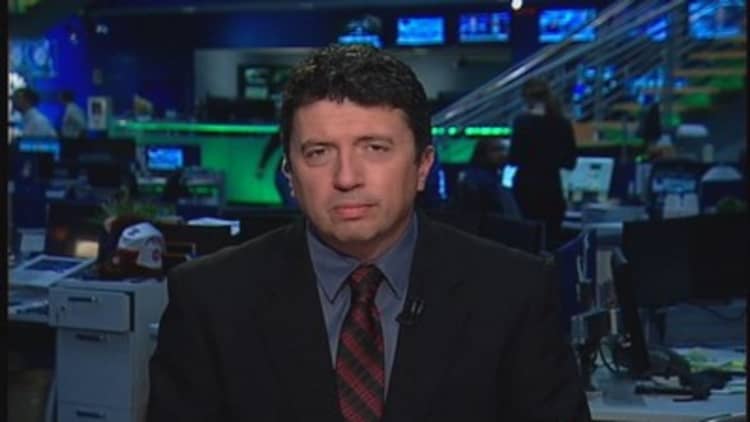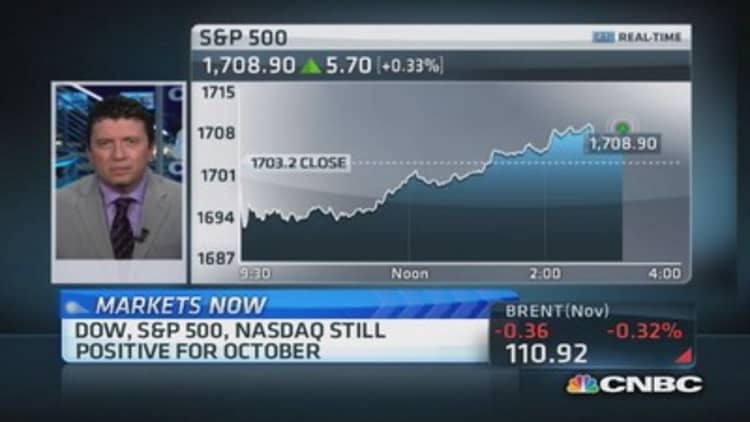
All of the grave doom-and-gloom warnings aside, the federal government is unlikely to run out of money Thursday even if the latest hopes for a budget deal don't pan out.
That has been the drop-dead date the White House has set for when the U.S. does not have enough money to meet its daily obligations.
Instead, Thursday is actually the day the Treasury Department will run out of accounting maneuvers that will allow it to continue to borrow money. The Treasury already technically has exceeded the nearly $16.7 trillion debt ceiling—with total debt outstanding at $16.75 trillion—but has been able to keep going through the creativity of its numbers-crunchers.
There has been much clamoring in Washington over the ramifications of a debt default.
Senate Majority Leader Harry Reid went so far Tuesday as to suggest a ratings' agency downgrade to U.S. debt could come as soon as overnight if the impasse isn't overcome.

(Read more: Reid: GOP proposal won't pass Senate)
However, there have been no indications of a downgrade, other than a notice from the DBRS credit rating agency last week that it had placed the U.S. under review for downgrade. The firm, though, is not one of the big-three agencies—S&P, Moody's and Fitch—that review sovereign credit.
So while a downgrade remains unlikely for now, things do get more difficult Thursday.
(Read more: When will the shutdown end? Let's talk 1995)
The government's spending pace in 2013 has been $13.3 billion a day while tax receipts have averaged $10.8 billion, according to Capital Economics. That leaves a daily shortfall of $2.5 billion.
Treasury will have to start dipping into the nearly $36.5 billion in reserves it is holding to cover that shortfall, meaning the government can still run for about 14 more days. That, though, is probably too optimistic an outlook.
"Because tax revenues fluctuate and spending obligations are not spread out evenly, the Treasury is likely to exhaust its reserves before then," Paul Dales, senior U.S. economist at Capital, said in a report.
(Read more: Budget impasse 'a wash' for markets: Shiller)
Looking at the government's schedule of upcoming payments, Dales sees the key dates coming as an Oct. 31 debt interest payment of $6 billion and a $57 billion payment the following day to cover Social Security, Medicare, military and income support payments.
There's also a big $15 billion payment due Nov. 15 that Treasury has "no chance whatsoever of meeting," he said.
While the situation is subject to the daily vagaries of running a $3.5 trillion business, the potential for a massively chaotic event Thursday is slim.
Markets certainly aren't pricing in anything of the sort.
(Read more: How safe is your money if the US defaults?)
The major stock market indexes actually have gained since the Washington impasse officially began. The , a popular measure of stock market unease, has stayed well within its historical bounds.
While it's true that credit-default swaps—used to insure against a U.S. default—have spiked along with short-term Treasury yields, any other yield disruptions probably will be "fairly small and short-lived," Dales said.
"The shutdown of the government means that daily revenues and spending are even less predictable than usual," Dales said. "Even so, it's very likely that the Treasury will be able to operate as normal on Thursday and for some days after. So even if a deal isn't done to raise the debt ceiling, we don't expect the sky to fall in on Thursday."
—By CNBC's Jeff Cox. Follow him on Twitter @JeffCoxCNBCcom.






